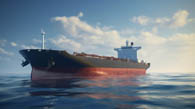Maritime Transportation vs. Aviation Standards: A Comparative Overview
Maritime transportation and aviation are two of the most critical modes of global trade and travel, each governed by its own set of standards to ensure safety, efficiency, and compliance. While both industries prioritize adherence to regulations to minimize risks and maximize operational effectiveness, their standards differ significantly based on the unique requirements of their respective fields.
Maritime transportation, which includes ships, ferries, and cargo vessels, focuses on standards related to navigation, cargo handling, and environmental sustainability. Key aspects include safety protocols such asInternational Maritime Organization (IMO) compliance, weather safety measures, and adherence to international waterway regulations. Additionally, maritime standards emphasize the protection of crew safety, cargo integrity, and the reduction of carbon emissions through cleaner technologies.
On the other hand, aviation standards are centered around air safety, noise pollution, and environmental impact. These standards include the certification process by aviation authorities, the use of standardized terminology, and the implementation of procedures for takeoff, landing, and taxiing. Avionic systems, air traffic management, and passenger safety training are also critical components of aviation standards. Unlike maritime transportation, aviation places a greater emphasis on noise reduction and sustainable practices to mitigate the environmental impact of air travel.
In summary, while both maritime and aviation industries have robust standards to ensure safety and efficiency, they prioritize different elements based on their operational requirements. Understanding these differences is crucial for businesses and individuals relying on these transportation modes to meet global standards and regulatory expectations.
